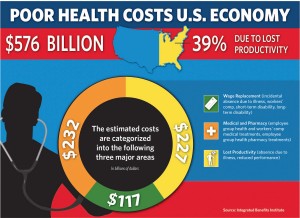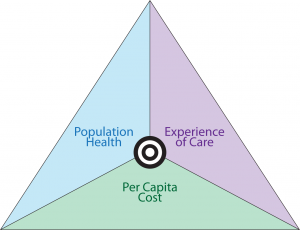 “What is the meaning of health to our businesses?” asked Dr. Thomas Parry of the Integrated Benefits Institute (IBI) at a dinner last night, convened by the Pittsburgh Business Group on Health on the eve of the organization’s annual meeting being held today in Steel City.
“What is the meaning of health to our businesses?” asked Dr. Thomas Parry of the Integrated Benefits Institute (IBI) at a dinner last night, convened by the Pittsburgh Business Group on Health on the eve of the organization’s annual meeting being held today in Steel City.
I was fortunate to attend the dinner and hear Dr. Parry speak; I will be addressing the meeting today on the topic, “Building a Better Health Consumer.”
The IBI is researching the direct link between the top line of a healthy employee base and healthy workers’ impacts on the bottom line. A report will be published in November 2015 with the results of their study, but Dr. Parry is bullish on the opportunity to forge a win-win between companies and their workforces when it comes to health.
He talked about how the last ten years’ of discussing ROI (return-on-investment) of wellness programs and health benefits spending has been the wrong conversation, something with which my colleague Al Lewis has been saying for many years. Al, too, is here to address this conference today on re-building wellness programs “from the ground up.”
What all three of us agree on is that the conversation must move from simply discussing health care costs to the context of value. Dr. Parry asserted, “If it’s only about health care costs, then don’t provide the benefit, make it (too) expensive (for employees to afford). Once we have the value conversation, we can align the interests” of employers and employees for that win-win.
Consider the total costs of health — not just the direct ones, but absenteeism, presenteeism, disability, and opportunity costs of not providing health beneifts.
Dr. Parry pointed to American Express as a pioneering user of employee data beyond the health claim. Amex collects lots of data points on employees — and “knows” that employees who are healthier also have higher customer service scores — which are the lifeblood for a credit card company where it’s quite easy for a consumer to switch from one card to another.
IBI’s membership of over 1,000 companies includes the “Fortune 1” — Walmart — as well as small businesses. From the biggest companies to the smallest, Dr. Parry is optimistic that we can forge partnerships between companies and workers that drive healthy lives as well as healthy bopttom lines.
I’ll talk today about the new health consumer, without whom the U.S. cannot achieve lower costs per person and higher quality. Self-care — by people who understand choices between health plans, providers and services based on good information about quality and prices in the community — is a linch-pin of achieving the Triple Aim which drives population health, enhances the patient-person experience of health care (more Amazon/Nordstrom/Uber-like, depending on your consumer lens), and finally reducing costs. We can build better consumers leveraging our status as evolving “Homo informaticus,” information-seeking, multi-channel consumers, which I’ve talked about here.





 I'm in amazing company here with other #digitalhealth innovators, thinkers and doers. Thank you to Cristian Cortez Fernandez and Zallud for this recognition; I'm grateful.
I'm in amazing company here with other #digitalhealth innovators, thinkers and doers. Thank you to Cristian Cortez Fernandez and Zallud for this recognition; I'm grateful. Jane was named as a member of the AHIP 2024 Advisory Board, joining some valued colleagues to prepare for the challenges and opportunities facing health plans, systems, and other industry stakeholders.
Jane was named as a member of the AHIP 2024 Advisory Board, joining some valued colleagues to prepare for the challenges and opportunities facing health plans, systems, and other industry stakeholders.  Join Jane at AHIP's annual meeting in Las Vegas: I'll be speaking, moderating a panel, and providing thought leadership on health consumers and bolstering equity, empowerment, and self-care.
Join Jane at AHIP's annual meeting in Las Vegas: I'll be speaking, moderating a panel, and providing thought leadership on health consumers and bolstering equity, empowerment, and self-care.